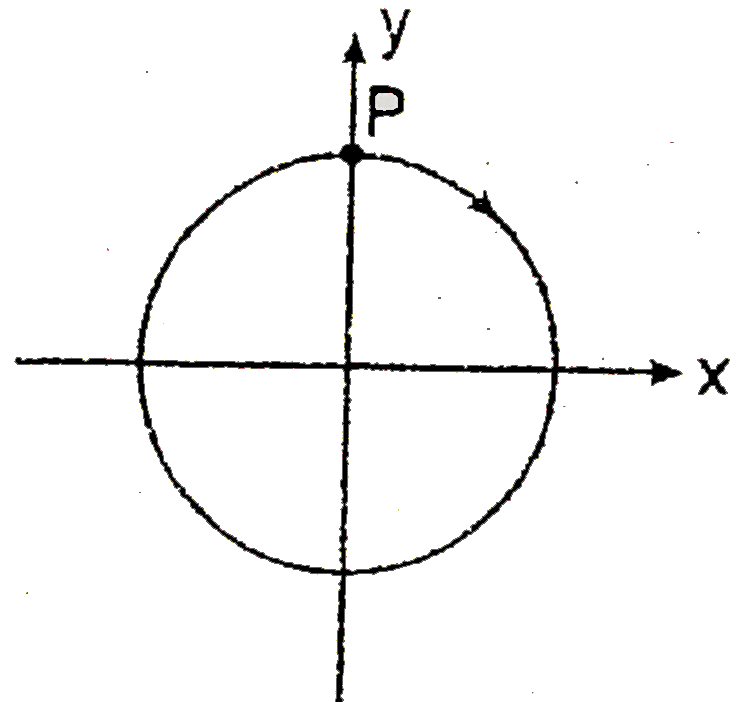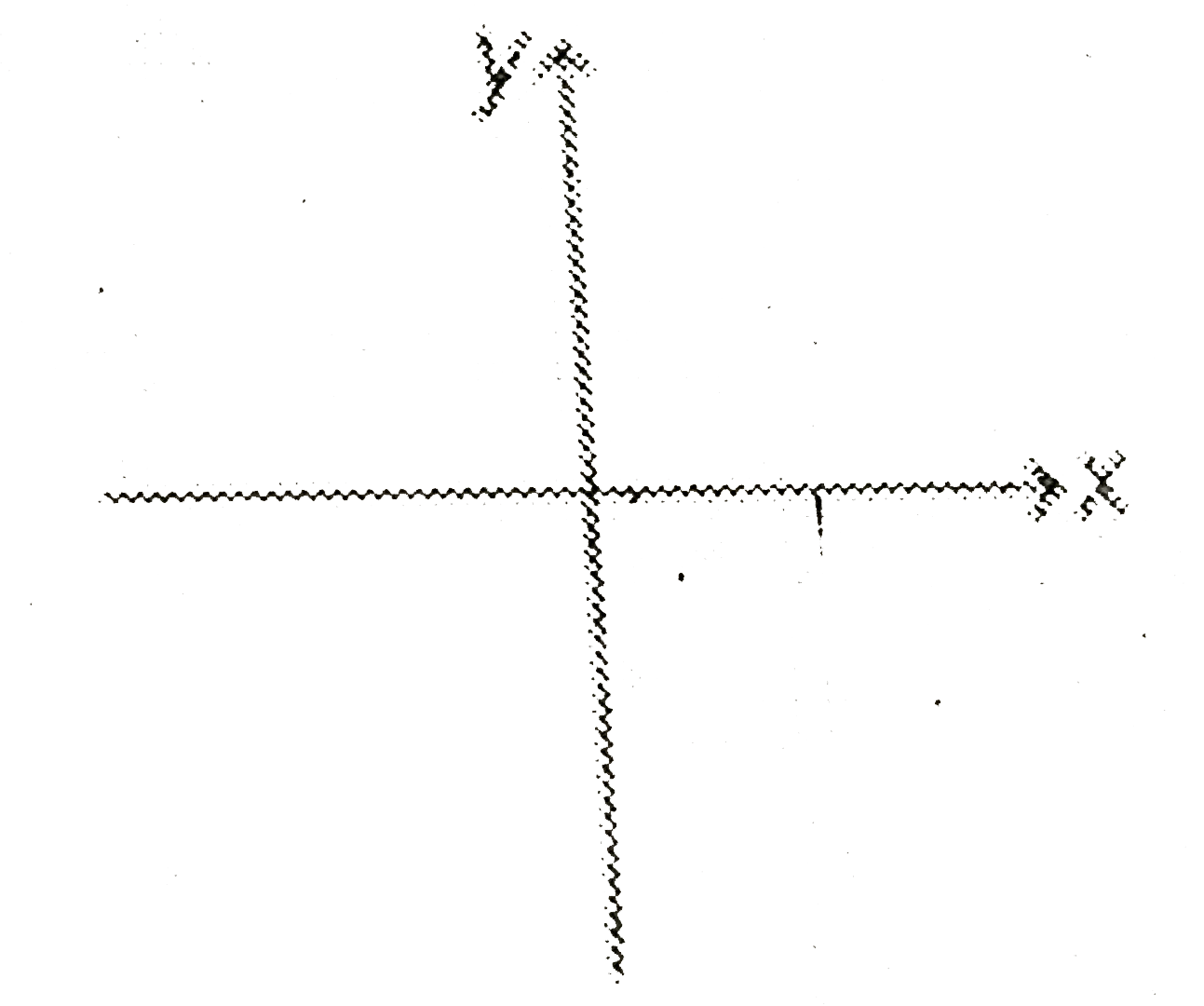A particle of mass 'm' is moving in the x−y plane such that its x and y coordinate vary according to the law x=asinωt and y=acosωt where 'a' and 'ω' are positive constants and 't' is time. Find
(a) equation of the path. Name the trajectory (path)
(b) whether the particle moves in clockwise or anticlockwise direction
magnitude of the force on the particle at any time t.
The correct Answer is:(a) x2+y2=a2, circle
(b) The particle moves in clock wise sense.
(C) The magnitude of force =m√a2x+a2y=mω2∂
(a) x2+y2=a2(sin2ωt+cos2(ωt))=a2
Hence the particle moves in a circle of radius 'a' with centre at origin.
(b) At t=0 sec, x=0 and y=+a. Hence the particle is at P as shown in figure.

As 't' increases 'x' increases and 'y' decreases
∴ the particle moves in clock wise sense.
(c) The 'x' and 'y' compoenents of acceleration are
ax=d2xdt2=−ω2x,ay=d2ydt2=−ω2y
The magnitude of force =m√a2x+a2y=mω2a
Topper's Solved these Questions
Similar Questions
A particle of mass 'm' is moving in the x-y plane such that its x and y coordinate vary according to the law x= a sin ωt and y= a cos ωt where 'a' and 'omega' are positive constants and 't' is time. Find
(a) equation of the path. Name the trajectory (path).
(b) whether the particle moves in clockwise or anticlockwise direction
(c) magnitude of the force on the particle at any time t.View SolutionA point moves in the plane xy according to the law x=asinωt, y=a(1−cosωt), where a and ω are positive constants. Find:
(a) the distance s traversed by the point during the time τ,
View SolutionFor a particle moving in the x-y plane, the x and y coordinates are changing as x=a sin ωt and y=a(1−cosωt), where 'a' and ω constants. Then, what can be inferred for the trajectory of the particle ?
View SolutionA particle moves in the XY-plane according to the law x=kt,y=kt(1−αt), where k and α are positive constants and t is time. The trajectory of the particle is
View SolutionA particle is moving in x-y plane with its x and y co-ordinates varying with time as, x=2tandy=10t−16t2. Find trajectory of the particle.
View SolutionA particule moves in x - y plane acording to rule x = a sin ωt and y = a cos ωt. The particle follows
View SolutionA particle moves in xy plane accordin to the law x=asinwt and y=a(1−coswt) where a and w are costant . The particle traces.
View SolutionA xandy co-ordinates of a particle are x=Asin(ωt)andy=Asin(ωt+π/2). Then, the motion of the particle is
 View Solution
View SolutionA particle moves in a circular path of radius R with an angualr velocity ω=a−bt, where a and b are positive constants and t is time. The magnitude of the acceleration of the particle after time 2ab is
View SolutionA particle moves in the x-y plane. It x and y coordinates vary with time t according to equations x=t2+2t and y=2t. Possible shape of path followed by the particle is
View Solution

